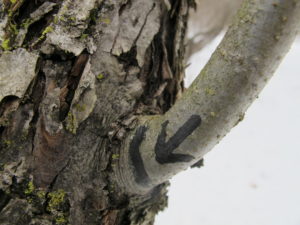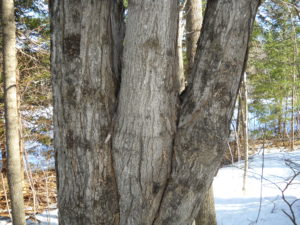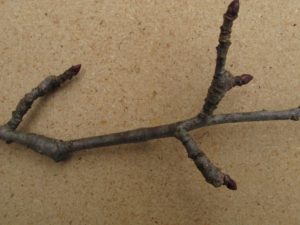8 Steps for Pruning Trees to Perfection
I find it amusing that fruit tree pruning and income tax preparations should take place at about the same time of year, and that many gardeners put off each until the last moment. You might want to start pruning now, instead of trying to do it while adding up your gasoline expenditures and medical expenses.
Below are 8 steps involved in properly pruning a tree. All are designed to create a healthier, more productive tree. By removing clutter you will allow direct sunshine to get to every leaf and wind to circulate, reducing chances of fungal infections. Keep in mind, too, that you can sculpt your tree, too, creating a thing of beauty. For me, that’s an important part of pruning.
- Remove all dead wood. You can tell if a branch is alive, even without leaves, by scratching it with a fingernail. Live twigs will show green when the outer layer of bark is removed. Dead branches will have dry, unhealthy look.
- Remove any diseased or damaged branches. Cracked branches should be removed, though I have had some grow back together by wrapping them tightly for a couple of months.
- If two branches are touching, they will rub and damage bark when the wind blows. Remove one branch.
- Branches should grow outward, away from the center of the tree. Remove any branches that aim back towards the middle of the tree.
- Branches will grow toward the light, and often two will try to fill the same space. If two are growing parallel to each other, remove one of them.
- Many fruit trees grow lots of vertical sprouts each year, each the diameter of a pencil. This is the tree’s way of producing more leaves to feed the roots, but these shoots, known as “water sprouts” will clutter up the tree. Remove most (or all) water sprouts. If you don’t do this every year, the water sprouts will become full-sized branches and your tree will a mess!
- Correct bad crotch angles. Often a branch will grow tight to the main trunk or another branch, creating a tight crotch angle. As the branch gets larger the two will grow together and bark will be swallowed up between them. This is a weak spot, and likely to split if the branches are loaded up with wet snow, or ice. Remove the offending branch – and the sooner the better. Removing a big branch is harder on the tree, and more difficult for you to do.
- Remove low branches that will interfere with mowing. If you have small children you will want them to be able to pick fruit, but you can still create room for the mower and accommodate kids.
Not all trees and shrubs should be pruned now. Spring-blooming shrubs like lilac and forsythia can be pruned, but you will lose blossoms. It’s better to prune after they bloom. Evergreens should be pruned in July after they have produced their new growth. Maples and birch should be done in early summer – right now they will “bleed” sap in large quantities.
How many branches can you take off now? Arborists say that 20% to 25% is fine. More than that, and you will start to starve the roots – leaves provide the food that roots need. That 25% figure is actually of the leaves, not the mass of wood. Dead wood doesn’t count, nor stems that support branches but have no leaves. Taking too many leaves may stimulate the tree to produce large numbers of water sprouts. That said, I once cut a huge lilac to the ground, and it came back nicely. That’s not recommended, however, and it would kill many other tree species.
Lastly, it’s important to know where to make your cuts. Branches generally have a “collar” that is at its attachment point. This collar is wider than the branch, and bark is often wrinkled. You need to cut just beyond the branch collar so that it can heal quickly and avoid infections. If you make a flush cut against the trunk, you open a wider area to diseases and insects, and remove the portion that produces protective compounds to avoid disease.
Pruning should be on your spring calendar just as garden clean-up is on your autumn calendar. But unlike clean-up, pruning get easier with time. A well-pruned tree is better behaved than one that has been ignored for 5 or 10 years. Get some good loppers, by-pass pruners and a pruning saw and get to work! And bring inside a few branches to put in a vase. They may reward you with some nice blossoms long before the outdoor trees do.
Read Henry’s blog posts at https://dailyuv.com/





